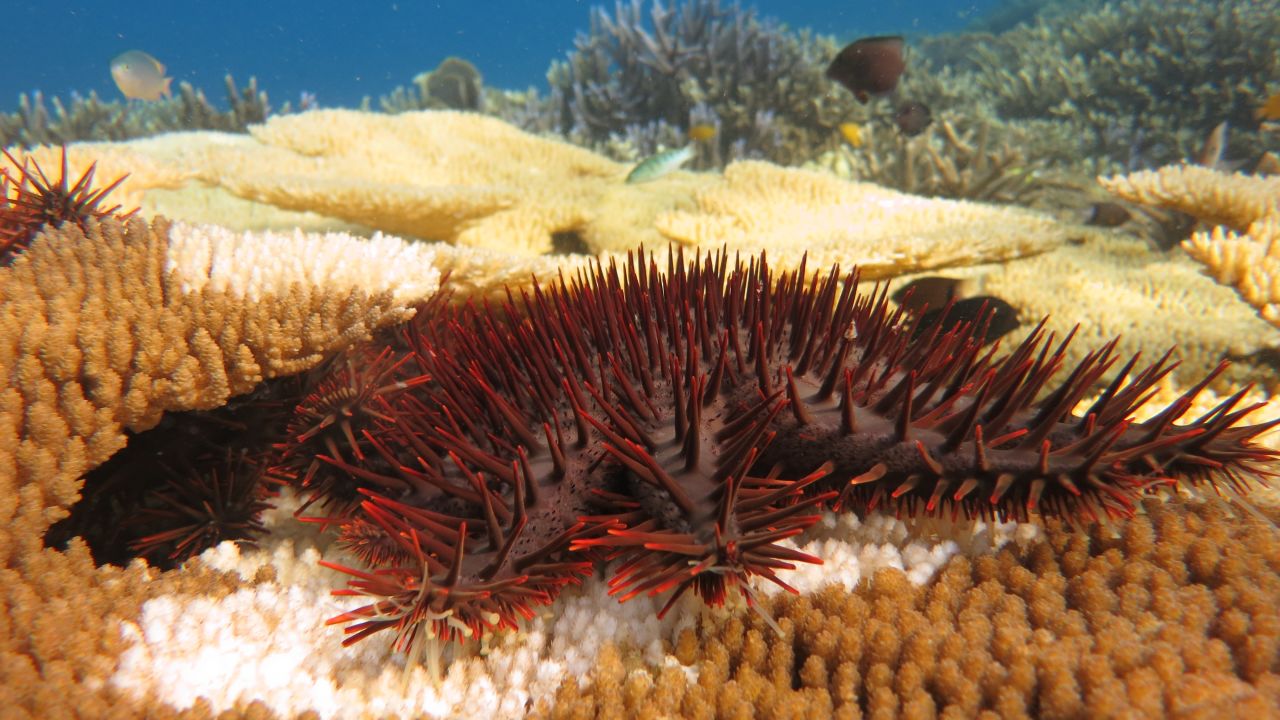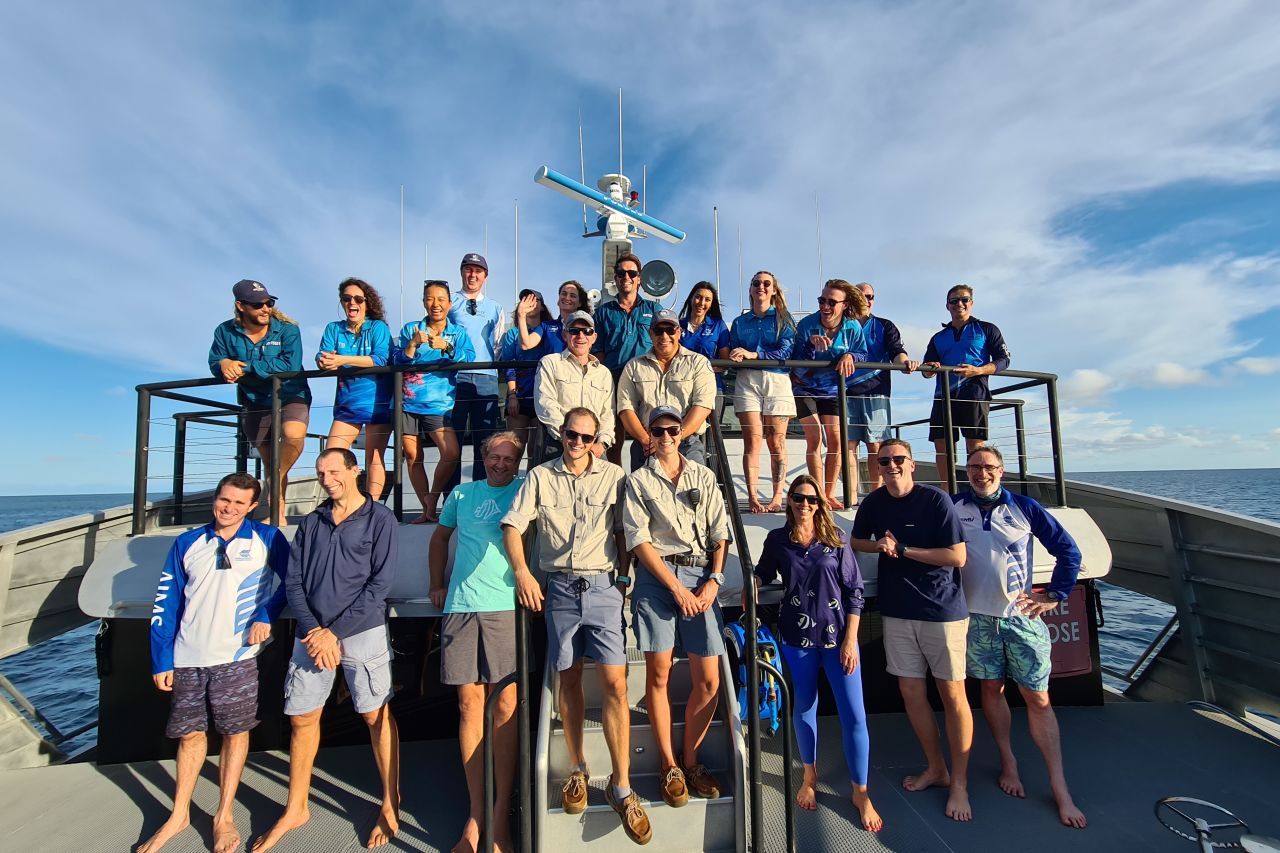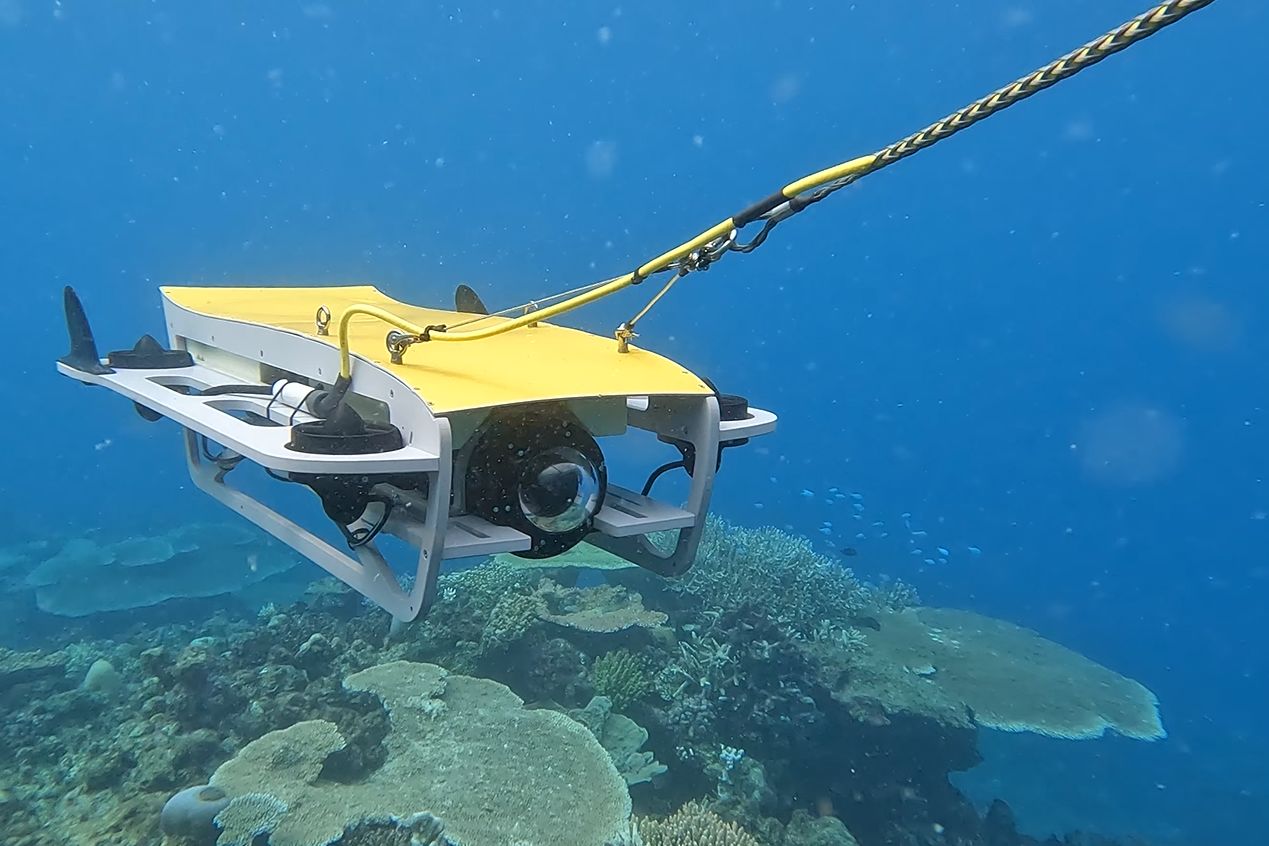News ·
Expanding our toolkit in the fight against crown-of-thorns starfish
We’re developing and testing new technology to hunt out more crown-of-thorns starfish and better protect corals from outbreaks.

Crown-of-thorns starfish (COTS) are a significant threat to our Great Barrier Reef. While they’re a native species, they eat large quantities of corals and can cause irreparable damage to our Reef if left unchecked. Nocturnal by nature, they’re difficult to detect, so the COTS Control Innovation Program is developing new tools and technology to help find and outsmart these coral predators.
In a huge collaborative effort that brought together 24 scientists, reef managers, and COTS Control crews from seven organisations, we spent 11 days at sea testing a range of new detection methods. These tools are being designed to help hunt down COTS, track their spread and guide control teams to COTS hotspots.

COTS outbreaks are a major threat to the reef.

The team who came together to test new COTS detection methods during 11 days at sea.
The new COTS detection tools put to the test were:
- eDNA – this method uses water samples to test for the DNA shed by COTS into the surrounding environment. Environmental DNA testing could allow us to detect the earliest warning signs of the starfish on a reef. During the trip, we collected 240 eDNA samples.
- COTS surveillance technology – this method uses robotics with AI capability to capture and analyse images of the Reef in real time, generating a live map of current outbreaks so crews can better focus their control efforts. We collected more than 80,000 images for analysis.
- Scooter-assisted diver survey – this method uses hand-held motorised underwater scooters that enable divers to cover large areas while undertaking fine-scale COTS monitoring. This method is useful to document changes in abundance and size of starfish in the very early stages of outbreaks. We intensively searched 120,000m2 of reef and detected 125 COTS and 202 tell-tale coral scars left by COTS.

By using robotics with AI capability, we can capture and analyse images of the Reef in real time.
The team was based on two large vessels provided in-kind to the project by Queensland Parks and Wildlife Service and Pacific Marine Group. The data collected is now being analysed and the new tools will form part of the suite of technology available to help predict, detect and respond to COTS outbreaks so we can better protect corals on the Reef.
This research was conducted as part of the COTS Control Innovation Program, in collaboration with the Australian Institute of Marine Science, James Cook University, CSIRO, Great Barrier Reef Marine Park Authority, Queensland Parks and Wildlife Services and Pacific Marine Group.




